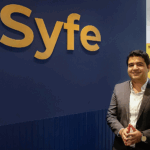By 2034, the market is anticipated to get to $553.8 million.
According to Polaris Marketing Research, the expanding assimilation of the National Health Care Structure for Hereditary Discovery is driving the high-allergic therapy market in Asia-Pacific, getting to $553.8 million by 2034 at a CAGR of 3.2% by 2034.
Federal governments and health care companies in significant economic climates are presenting very early analysis prepare for increasing neonatal testing and lysosomal storage space problems, such as Gaucher’s condition.
” In recent times, in nations such as China, Japan and South Korea, individuals have actually started to improve understanding of unusual conditions and rise financing for unusual conditions,” the record stated.
On top of that, the access of enzyme substitute treatment (ERT) has actually additionally increased throughout the area.
It included: “Federal governments in nations such as China have actually enhanced the listing of repaid medications in nations such as Imiglucerase and Velaglucerase alfa.”
Gaucher’s condition is an uncommon long-lasting hereditary condition identified by an absence of “glucocerebrosidase” enzyme, bring about the build-up of fatty compounds in the bone marrow, spleen, liver and nerve system.









